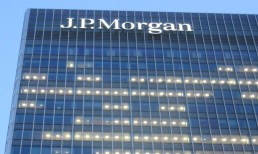They deployed a GenAI app called “Lidlize” that lets users create anything they wanted in Lidl’s red, blue and yellow brand color palette, according to a case study from partner Bria, a visual GenAI company.
Consumers embraced the tool, generating images of everyday objects like cars, shoes and even pet statuettes. Users didn’t need any technical skills or prompt engineering expertise to participate; they merely had to type the name of the object they want to create.
Within three weeks, users created over 1.7 million unique visuals using the Lidlize app. Influencers helped distribute the campaign, and users across social media shared their AI-generated Lidl-branded content. At one point, image requests peaked at over 1,000 per minute.
“We blew away the client’s predictions,” said Christophe Sennet, technical director at Marcel, which is owned by the French advertising giant Publicis Groupe, in the case study.
At the core of this campaign was a custom visual AI model from Bria, a GenAI startup whose AI model was trained on licensed, commercial grade datasets. It uses AWS cloud infrastructure.
“Never in my wildest dreams did I expect we would reach almost two million generations, all created by users,” said Oded Lavie, vice president of innovation and global GenAI partnerships at Publicis. “It smashed all our predictions. The tech worked perfectly and auto-scaled. People went wild creating items in Lidl’s style.”
As GenAI transforms the enterprise landscape, business leaders are seeing increasing benefits from deployment of the technology, according to PYMNTS’ “The CAIO Report: Since March, Triple the CFOs Report Very Positive ROI from GenAI.”
From March 2024 to December 2024, nearly 90% of CFOs surveyed said they saw “very positive ROI” from GenAI implementation. As a result, business leaders are incorporating the technology into more use cases across their companies. Notably, 70% used GenAI to create new content, up from 48% in the March-December time span.
Fully Licensed Dataset
The campaign’s success hinged on a tightly orchestrated collaboration between Marcel and Bria.
The development requirements were extensive: The AI had to produce high-quality, on-brand visuals, support multilingual inputs, maintain low latency even during traffic surges, and comply with the EU AI Act.
Sennet said they used OpenAI’s AI models to understanding the meaning of user prompts and spaCY — an open-source natural language processing library — to apply specific rules about what kind of content was allowed.
Notably, the platform not only generated images but also could trace every AI-generated asset back to its licensed origin. This ensured all content was ethically sourced and original creators were compensated — an important differentiator in today’s regulatory landscape.
Meanwhile, Marcel designed a system that removed the need for user-generated prompts. By integrating large-language model (LLM) logic into the app to dynamically created structured prompts behind the scenes, it standardized outputs while varying object types.
Critically, the platform lowered the image generation time to 2 seconds from 8 seconds — crucial for real-time online marketing for brands.
To reach French-speaking audiences, they also embedded automatic translation for French-language inputs.
Lidl’s campaign implemented the following best practices:
- Started with brand-specific training data: Lidl’s visual brand identity was faithfully reproduced, preventing dilution.
- Made the UX frictionless: Automated prompt generation and language support reduced barriers for user engagement.
- Ensured regulatory readiness: From datasets trained on licensed datasets to AI content attribution, Lidl’s campaign took pains to meet both ethical and legal requirements.
- Prioritized scalability: AI-powered experiences can go viral. If your back end can’t scale, your campaign could backfire.
Read more: Lidl Refreshes Brand to Capture Discount Grocery Buyers
Read more: Lidl’s Tactical Retreat In The US
Read more: AI Marketers: The New Mad Men?




